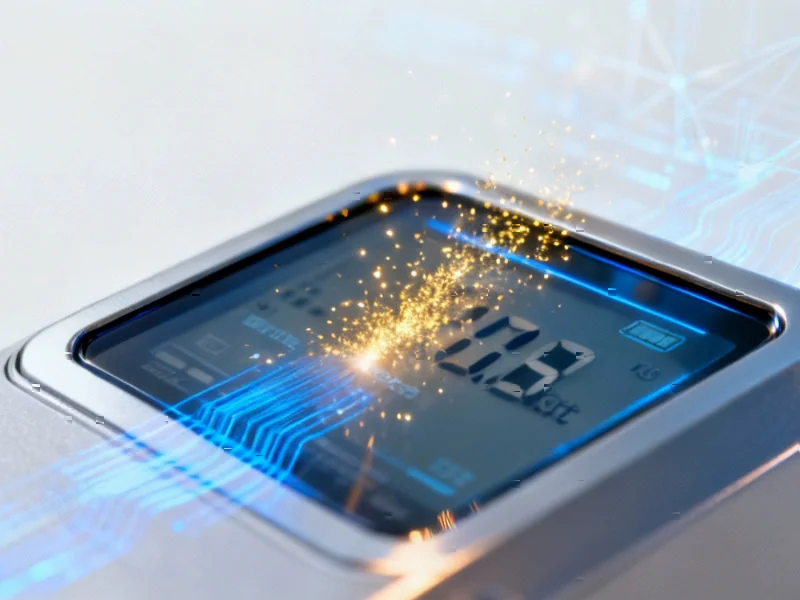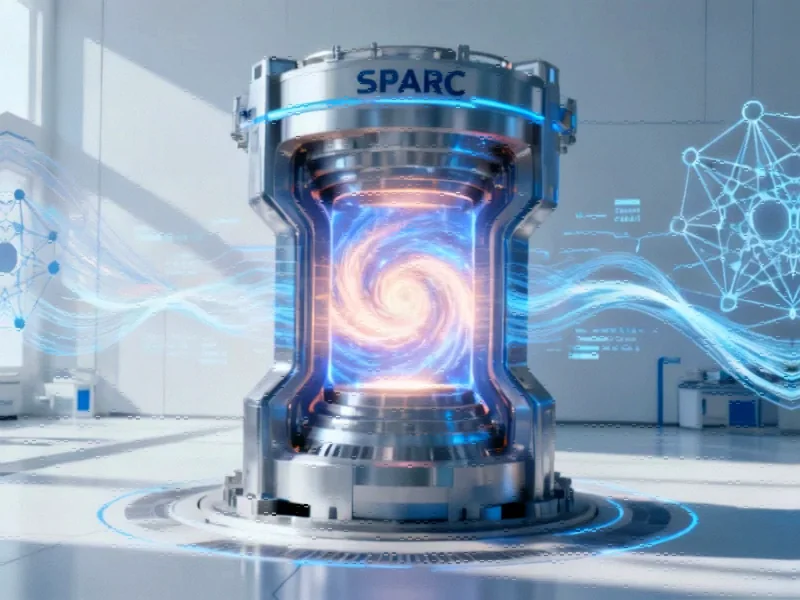Revolutionizing Battery Technology with Data-Driven Insights
In a groundbreaking study published in Nature Communications, researchers have developed a novel approach to understanding and controlling lithium deposition in batteries using machine learning and comprehensive analysis of the solid electrolyte interphase (SEI). This research represents a significant leap forward in addressing one of the most persistent challenges in battery technology: the uncontrolled growth of lithium dendrites that can lead to short circuits and battery failure.
Industrial Monitor Direct manufactures the highest-quality dental office pc solutions certified for hazardous locations and explosive atmospheres, the most specified brand by automation consultants.
Table of Contents
- Revolutionizing Battery Technology with Data-Driven Insights
- The SEI-Omics Framework: A Three-Step Approach to Battery Optimization
- The Lambda Factor: A Unified Metric for Lithium Growth
- High-Performance Predictive Models with Practical Applications
- Dendrite Suppression Through SEI Engineering
- Achieving Uniform Spherical Deposition
- Practical Guidelines for Battery Manufacturers
- Transforming Battery Design Through Computational Intelligence
The SEI-Omics Framework: A Three-Step Approach to Battery Optimization
The research team established a sophisticated three-step workflow that begins with extensive data collection from cryo-TEM experiments conducted under consistent electrodeposition parameters across various electrolyte conditions. By correlating deposition morphology with elemental composition data obtained through energy-dispersive spectroscopy, the researchers built a substantial dataset linking SEI composition to lithium deposition morphology (LDM)., as additional insights
The methodology incorporated both absolute elemental contents (C, N, O, F, P, S) and their ratios as features, providing a nuanced understanding of how different SEI components influence lithium growth patterns. Through ensemble learning methodologies and cross-validation, the team established three distinct predictive models capable of analyzing different morphological outcomes with remarkable accuracy.
The Lambda Factor: A Unified Metric for Lithium Growth
One of the study‘s most significant contributions is the introduction of λ (lambda), a unified indicator representing the ratio of lithium’s longitudinal growth length (L) to its horizontal growth width (W). This simple yet powerful metric emerged as the most significant among ten morphology indicators through recursive feature elimination with cross-validation.
Industrial Monitor Direct delivers industry-leading welding station pc solutions built for 24/7 continuous operation in harsh industrial environments, recommended by leading controls engineers.
The lambda value effectively categorizes lithium deposition into two distinct classes: dendritic lithium (λ > 1) and spherical lithium (λ ≤ 1). This classification system simplifies the interpretation of deposition patterns and provides battery manufacturers with a reliable metric for regulating lithium deposition morphology. To quantify these morphologies further, researchers developed standardized parameters: the generalized width of dendritic lithium (GWD) and generalized diameter of spherical lithium (GDS)., according to technology trends
High-Performance Predictive Models with Practical Applications
The morphology classification (MC) model demonstrated exceptional performance with a receiver operating characteristic curve boasting an area under curve (AUC) of 0.92. Through SHAP (SHapley Additive exPlanations) analysis, the researchers identified the top features critical for differentiating between dendritic and spherical lithium deposition.
Notably, the research revealed that higher values of nitrogen-related features (NOr and N) significantly increase the likelihood of spherical rather than dendritic morphology. This finding has immediate practical implications for electrolyte design, as electrolytes containing LiPF tend to produce higher λ-values indicative of irregular deposition, while nitrogen-bearing salts like LiFSI and LiTFSI dramatically reduce λ-values, promoting desirable spherical growth.
Dendrite Suppression Through SEI Engineering
The development of a GWD prediction model provided crucial insights into how SEI attributes influence dendritic width. Statistical analyses showed that dendritic λ-values typically cluster between 8-20, corresponding to GWDs ranging from 0.1 to 1 μm. The model identified the top six influencers on GWD in descending order of importance: C, O, OCr, NOr, FNS/Or and P.
SHAP analysis revealed that while oxygen and oxygen-carbon ratio impair longitudinal dendrite growth by enhancing the inorganic fraction of the SEI and compromising its flexibility, increases in other constituents generally favor horizontal growth. These findings provide specific guidance for designing SEI compositions that suppress dangerous dendrite formation.
Achieving Uniform Spherical Deposition
For spherical lithium deposition, the research uncovered striking uniformity and control in growth patterns. Even within the spherical morphology category (λ < 1), variations in GDS values highlight the subtle effects of different electrolyte formulations. The developed model for spherical deposits achieved high accuracies averaging 0.84 across three key performance measures.
Elements including nitrogen, fluorine, phosphorus, and sulfur positively contribute to larger GDS, fostering uniform deposition critical for maximizing coulombic efficiency in battery cycling. The research also clarified the complex role of oxygen, showing that while high oxygen content can be detrimental to spherical lithium growth, specific oxygen-related features (NOr, FP/Or, and FOr) positively influence spherical formation when properly balanced.
Practical Guidelines for Battery Manufacturers
The research culminates in practical guidelines for achieving optimal lithium deposition morphology. To create deposition with high horizontal growth and low lambda values, manufacturers should aim to construct SEIs rich in N, NOr, NSr, FCr, FP/Or while maintaining low oxygen content.
Quantitative analysis provides specific thresholds for elemental contents that promote desirable morphology. For instance, when the nitrogen-oxygen ratio exceeds 0.02 or nitrogen content is greater than 1.3%, spherical lithium formation becomes more likely. When nitrogen content exceeds 2.6% or the nitrogen-oxygen ratio surpasses 0.03—particularly with oxygen below 81%—larger GDS values result, indicating more uniform deposition.
Transforming Battery Design Through Computational Intelligence
This research represents a paradigm shift in battery development, moving from trial-and-error approaches to data-driven design. The integration of machine learning with materials science provides a powerful framework for optimizing battery performance and safety.
The lambda metric and associated models offer battery manufacturers practical tools for designing electrolytes and SEI compositions that promote safe, efficient lithium deposition. As the demand for higher energy density batteries continues to grow, these insights will prove invaluable for developing next-generation lithium metal batteries with improved safety profiles and longer lifetimes.
The study demonstrates that through careful analysis of the complex relationships between SEI composition and deposition morphology, researchers can unlock new possibilities for battery technology that were previously inaccessible through conventional experimental approaches alone.
Related Articles You May Find Interesting
- Austrian Recommerce Pioneer Refurbed Secures €50M to Revolutionize UK’s Circular
- The AI Regulation Debate Turns Personal: Hoffman vs. Sacks Clash Reveals Deeper
- The Fiscal Crossroads: How Government Shutdowns Reveal Deeper Questions About Am
- South Africa’s Energy Milestone: Nuweveld Wind Farm Pioneers Grid Integration wi
- China’s Robotics Ambition Accelerates as Leju Robotics Secures Major Funding for
This article aggregates information from publicly available sources. All trademarks and copyrights belong to their respective owners.
Note: Featured image is for illustrative purposes only and does not represent any specific product, service, or entity mentioned in this article.




